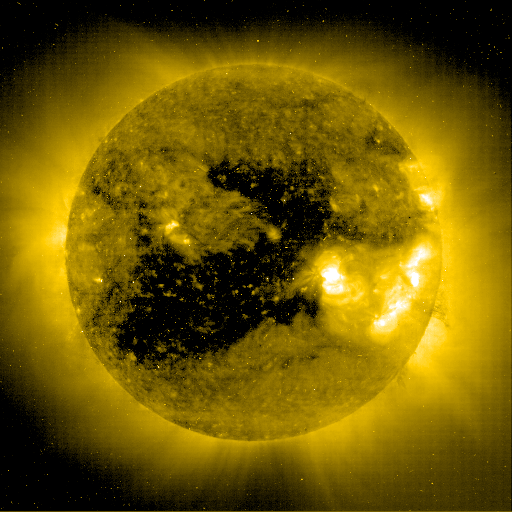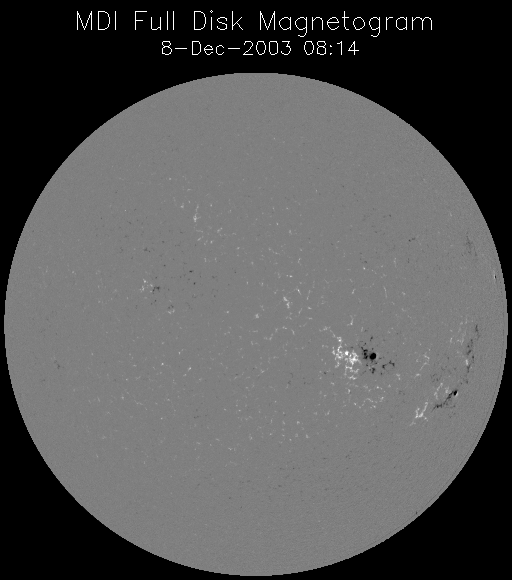At the moment, a tremendous coronal hole is visible in EIT 284. Coronal holes are areas on the solar disk characterized by open magnetic field lines. The invisible magnetic field lines seem to go to space reaching the infinite. That's the reason why they are easy to spot looking through an X-ray telescope. Hot gases hold together by magnetic loop structures connecting nearby sunspots are seen as bright structures in x-ray wavelengths. The open magnetic field is not capable to capture this plasma emitting x-radiation. The coronal holes appear as very dark areas. This can be seen in the yellow picture on the right, an EIT picture in 28.4 nm.

A hole is defined as an area with open field lines pointing inwards or otherwise outwards of the Sun. Looking at an MDI magnetogram (below), one can distinguish different holes by separating areas with black and white spots. Black and white denotes opposite field directions. If we would put the magnetogram on top of EIT 284, we see that there are only white spots in the whole black area: so, the hole is not build up with different adjacent holes. We are dealing with an extremely large hole.

Very nice, but why should we bother? Rather than trapping hot gas, the open field structure allows the hot plasma to escape. The plasma is blown into space following the magnetic field lines and possibly reaching earth. If this is the case, we denote a hole as geo-effective. The earth magnetic field can be largely disturbed if the magnetic field carried by the solar wind is opposite to the earth magnetic field. In this case, the two fields reconnect triggering stormy weather.
The coronal hole we now see, was already the cause of large disturbances of the geomagnetic field during the previous rotation. From November 11 until November 17, the estimated Kp index giving by NOAA reached values of 6.





